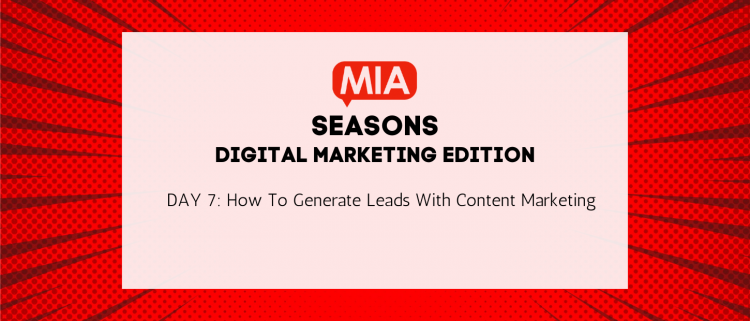Many businesses fail because they don’t know how to generate leads and attract them by creating valuable content. If you want to generate leads with your content marketing strategy, you should create valuable content that will help your target audience, share it on the right channels, and offer it at the right time.
In this article, we’ll cover how to generate leads with content marketing.
1. Develop a Buyer Persona
Your ideal audience is what you should be focusing on when creating content. It’s about creating something that will interest and inform them. Before you start with content marketing, it’s important to identify your audience and create buyer personas for them. This allows you to focus on content that can benefit your targeted audience.
What is a Buyer Persona?
A buyer persona is an avatar that represents a target customer’s needs and behavior. It is a fictional representation of a particular type of person that can be used to create content that is helpful for this person.
Buyer personas are made by segmenting the market into different types of users to create a detailed profile for each type of user based on their demographic, psychographic, and behavioral characteristics.
When you understand the underlying needs of your target audience, you will be able to create content that meets their expectations while also addressing their pain points.
2. Choose Your Content-Type
Content creators create content either to generate traffic or generate leads. To generate leads, you need to bring traffic to your site.
Here are some types of content that can be used to generate traffic.
- Blog Posts – Writing blog posts is an easy way to generate traffic to your website. Apart from that, it helps you create content relevant to the audience.
- Social Media Posts – With the rise of social media, it’s become an effective way to gain traffic for your website. Consider using social media posts to generate more traffic.
- Videos – One way to get your site more traffic is by creating videos. Make them interesting and relevant to your target audience.
- Infographics – Blog posts can include infographics to encourage social sharing.
- Podcasts – Podcast is a form of digital content that is experiencing fast growth on the internet. You can use podcasts to interact with your audience more intimately and build traffic towards your website/blog.
Once you start seeing traffic from your content efforts, the next step is to create content that you would use in lead generation.
What is Lead Generation Content?
Lead generation content is a type of content that marketers use to capture leads and build relationships with their audience. Lead generation content can be anything from case studies, free reports, webinars to the form of an ebook.
3. Choose Your Content Distribution Networks
You started building a customer avatar and arrived at a list of types of content you think will resonate with them. The next step is to decide where you will distribute that content.
There are two ways to distribute your content – Organic or Paid channels.
Organic channels require no paid advertising, which makes them great for the budget-conscious. Organic channels can drive traffic & provide steady growth over time so you should start seeing good results soon after starting the organic channel strategy.
There are some major organic distribution channels include:
- Search engines
- YouTube
- Tumble
- Quora
Pick the channels where your customer avatar usually spends time and use these channels to maximize your content distribution.
Paid Distribution Channels require you to spend some money on ads, which does help promote your content a lot quicker.
There are some popular paid distribution channels include:
- Social media ads
- Search ads
- Display ads
- Native Ads (Ads that appear on other platforms)
- Content discovery networks
Using both organic and paid methods of lead generation can help your site in the long run. You can then track how each method is performing over time with different digital marketing metrics.
4. Create Compelling Lead Magnets
A lead magnet is used as a way to entice people into your product or service offering, which in turn generates high-quality leads for your company.
Lead generation ideas:
- Monetize your blog with content-related lead magnets like eBooks, whitepapers, infographics, and more.
- Create an article series that generates leads for your business by offering free downloads of the content they’ll be reading.
Here are some of the key characteristics of lead magnets that make them so effective.
- Lead magnets must be easy to understand and provide value
- Lead magnets must be designed based on the audience they’re targeting
5. Optimize Your Landing Page
If your website sees a lot of traffic, but you haven’t optimized your landing page for lead generation, you’re wasting a lot of opportunities.
Here are some of the strategies that may be able to help you improve the landing page conversion rate.
Removing Navigations: One way of improving conversion rates is by removing navigations from your landing pages. It would be good to have only “close the page or opt-in” options at the top of your landing page.
Landing Page Design: A poor landing page design can lead to a costly loss of leads. Some companies may want to improve the quality of traffic that they receive.
Don’t be afraid to test different layouts and colors, as there is no one-size-fits-all design for a landing page. Your website UX can vary depending on your business model, so you should test with abandon until you find your perfect site layout.
Clear Call to action: A well-designed CTA button is crucial to converting new visitors to customers. It should be clear by featuring relevant brand colors & graphics, visible on top of the fold.
Conclusion
While building a digital marketing strategy, you should follow these steps to ensure more return on investments. These strategies will help generate more leads, increase conversions, and drive increased sales volume.
















